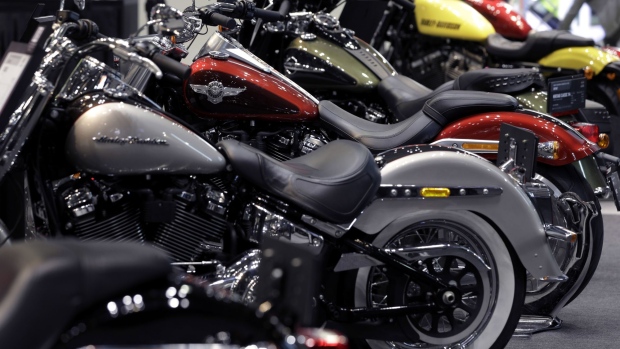Jul 28, 2020
Harley-Davidson investors sour on CEO Zeitz's turnaround plan
, Bloomberg News

Harley-Davidson Inc. investors, who cheered the appointment of a turnaround artist, don’t like the early rendition of his makeover for the ailing motorcycle maker.
Jochen Zeitz, a former Puma SE boss who became chief executive officer in February, has been working to shrink the company and narrow its focus amid a five-year sales slump in its core U.S. market. He has cut roughly 14 per cent of the workforce, pruned its dealer network and delayed product launches.
“We’re not willing to sacrifice the strength of our legacy in a quest for pure volume growth going forward,” Zeitz said on a conference call. “We are an extraordinary and desirable brand but that doesn’t mean we want to become everything for everybody.”
That sobering message came after Harley on Tuesday posted its first quarterly red ink in more than a decade. The bikemaker reported a loss of 35 cents a share, missing the lowest analyst estimate and below a consensus for a profit of 18 cents a share.
Investors reacted by pushing down its shares as much as 11.3 per cent to $25.98, the steepest decline in four months.
Zeitz, who joined Harley’s board in 2007, rose to prominence by reviving a nearly bankrupt Puma in the early 2000s. Since taking the handlebars at the motorcycle manufacturer earlier this year, he’s sketched out a turnaround plan dubbed “Rewire” and has promised a five-year strategic plan due by the fourth quarter, which he calls “Hardwire.”
His steps so far include starving dealers of new bikes to clear out excess inventory, a move the company says has helped it charge full price for 2020 model-year bikes. Zeitz told analysts Tuesday he aims to increase the brand’s desirability by putting quality ahead of quantity.
The Milwaukee, Wisconsin-based manufacturer said it would speed up restructuring by cutting about 30 per cent of its model lineup and concentrating on 50 markets. Harley said in its latest annual report that it had dealers in about 100 countries worldwide.
What Bloomberg Intelligence Says:
New management may be embracing its history and core rider demographic, while remaining a niche player to attract a larger automotive or motorsports partner.
-- Kevin Tynan, senior automotive analyst
Zeitz’s belt-tightening wasn’t enough to offset a 59 per cent plunge in Harley’s second quarter shipments after the coronavirus halted production in its factories in the U.S. and Thailand and temporarily closed dealerships around the world.
There may be more pain to come as Harley is pushing back the debut of its first adventure touring bike, the Pan America, to early 2021 instead of August.
The CEO said he will invest savings from the cost cuts into new marketing campaigns. He is reorganizing the company’s structure to reduce complexity and improving outreach between its field offices and headquarters in Milwaukee.
Harley declined to give financial guidance for 2020, saying the impact and the duration of the pandemic is still too uncertain.



